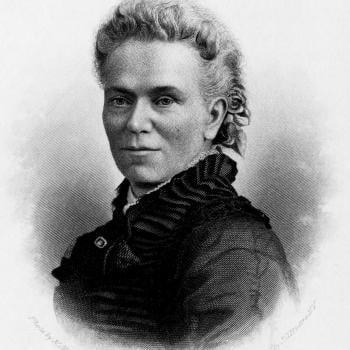One of the most provocative topics in the American History survey class is the Salem witchcraft trials. Although it was a great tragedy, the episode lends itself to wonderful discussions about historical interpretation. As Emerson Baker’s recent book A Storm of Witchcraft points out, the past four decades have seen a huge expansion of the literature on Salem, making it difficult to point to just one factor as causative.
Befitting the Oxford series in which his book was published, “Pivotal Moments in American History,” Baker emphasizes the causal role of individual choices. Rev. Samuel Parris chose to interpret the behavior of his daughter and niece as witchcraft. Salem judges chose to presume (not atypically for the time) that Tituba, Sarah Good, and Sarah Osborn were guilty of witchcraft. Tituba, the accused slave woman, chose to confess to participating in witchcraft and to confirm that there were other witches operating in Salem. Massachusetts governor William Phips selected judges who would accept testimony based on spectral evidence (seeing the spirits of the accused, etc.), even though the father-son tandem of Increase and Cotton Mather had their doubts about the admissibility of spectral evidence. And so on.
One of the most fruitful lines of discussion about Salem, I find, is the question of whether the accusers and the afflicted were “faking” their accusations and afflictions. This question points up a major difference between 1692 and our contemporary culture. Very few people in western Europe and America would openly testify to direct encounters with the devil or his minions these days, even if a number of believers might privately wonder about demonic oppression and assaults, and if far more would doctrinally affirm a belief in the devil, demons, and the possibility of witchcraft.
In 1692, virtually every person involved with the episode believed in the reality of the devil, demons, and witches. Many of them would not have hesitated to accept the possibility of real-life malevolent activity, and even tangible, visible appearances of these dark forces. Thus, even devout believers today often have a more secular mindset than people in early modern Europe and America. We can’t impose our mindset on past actors. To them, witchcraft was a live, legal problem. If people were practicing witchcraft, that was a criminal offense that needed to be investigated and prosecuted. But how could you do that without admitting spectral evidence?
Twenty people (and two dogs suspected of being witches’ “familiars”) were executed as a result of the trials. But the embarrassment surrounding the case, and the acceptance of spectral evidence, largely put a halt to witchcraft trials in America after 1692, save for occasional accusations. In Europe, witchcraft controversies persisted in some areas. In Hungary alone, some eight hundred people were executed for witchcraft from 1710-1750. And in some areas of Asia, Africa, and the Middle East today, witchcraft accusations and executions persist.
Baker helpfully points out the little-known fact that an aunt and uncle of Benjamin Franklin were among the accusers in Salem Village. By the 1730s, Franklin made witchcraft and similar supernatural beliefs regular targets of his satire. Franklin helped to marginalize everyday supernaturalism in American culture. This may not be an entirely good thing from a Christian perspective, as the Bible certainly affirms the existence of good and evil spiritual powers in the world. But many of those who participated in the Salem trials came to realize that their supernaturalism had turned to gullibility and bad legal practices, with disastrous results.
[Friends, you can sign up here for my Thomas S. Kidd author newsletter. Each newsletter will update you on what’s happening in the world of American, a religious and political history, and current events. It will contain unique material available only to subscribers, and each will help you keep up with my blog posts, books, and other writings from around the web. Your e-mail information will never be shared. Thanks!]












